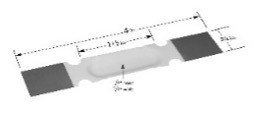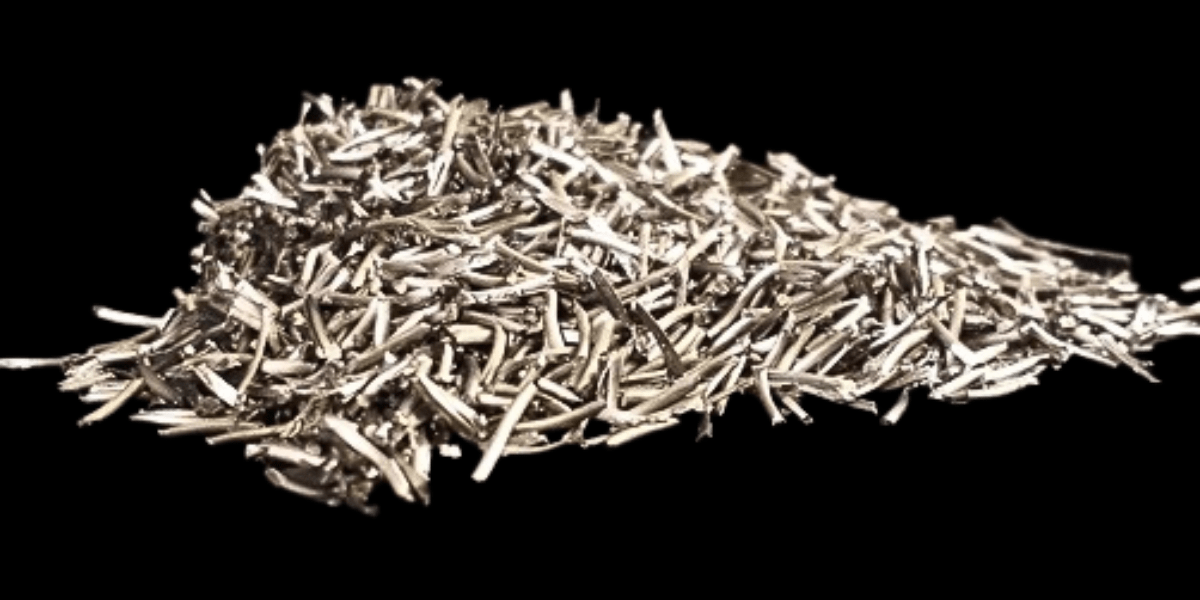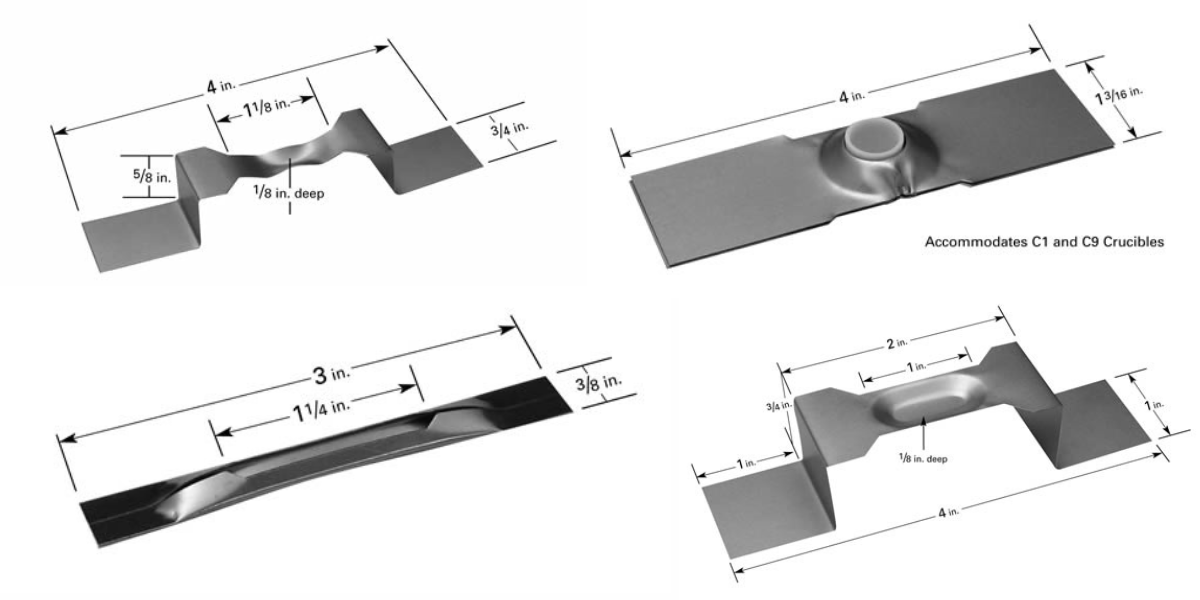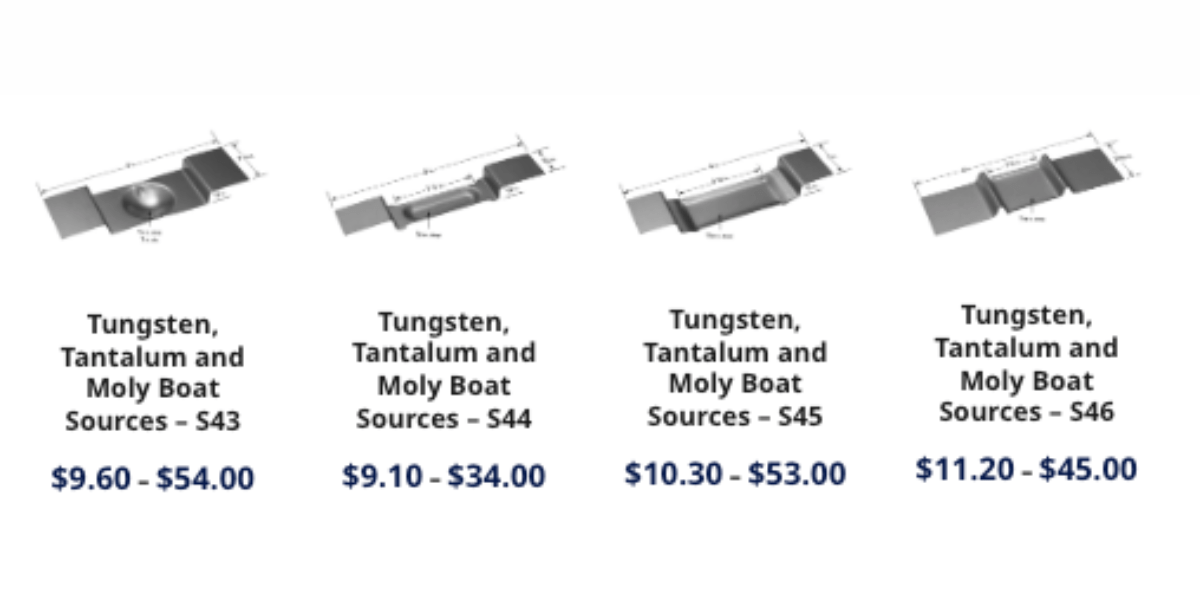Choosing the Right Source for Your Thermal Evaporation Process
The right source for your thermal evaporation process will depend on many factors, such as the material you want to evaporate and the system you are using for your thin film process. The diagram below illustrates the typical layout of a thermal evaporation system within a vacuum chamber:
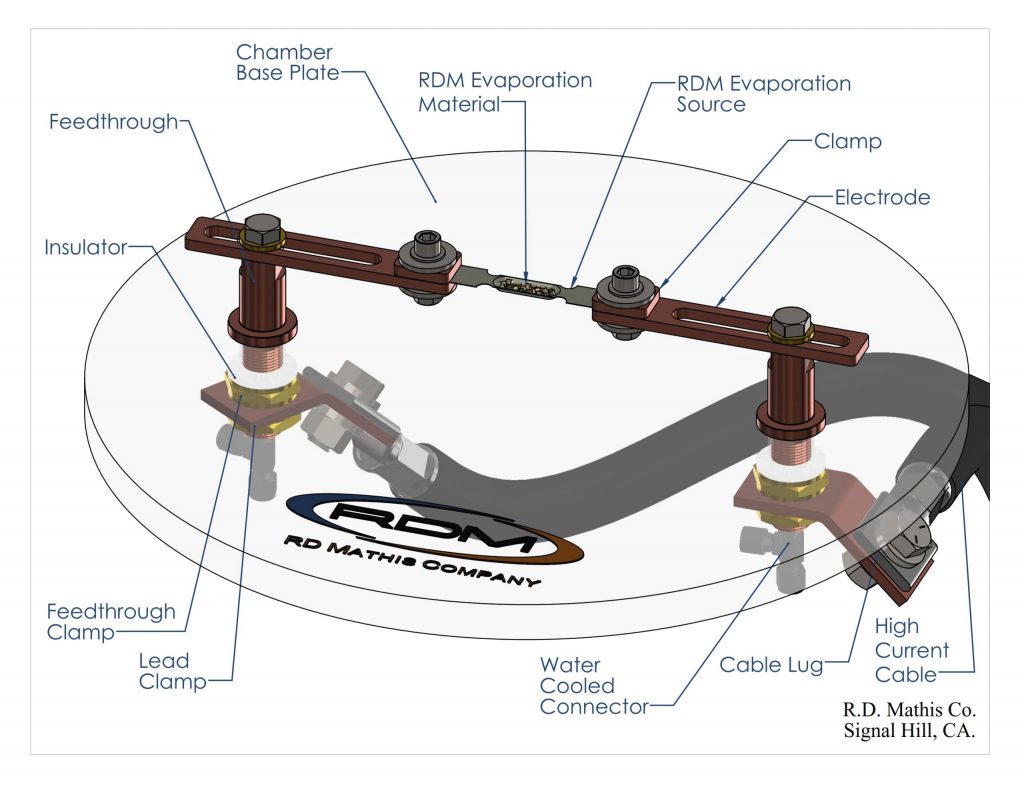
The R.D. Mathis Company offer a wide selection of evaporation sources, as well as custom fabrications to meet you specific needs. There are several options when it comes to sources, such as tungsten, tantalum and molybdenum or using alumina coatings to minimize migration and corrosion.
Let’s explore some questions to ask for choosing a specific source:
Factors to Consider When Choosing a Source
- Evaporant: What material is being evaporated? Which source material is compatible with your evaporant?
- Temperature: What temperature will you require?
- Dimensions: What is minimum & maximum length that will fit in to your mounting scheme?
- Power Supply: How much power do you have to heat the source (amperage)?
- Capacity: What capacity will you need to achieve your desired thickness?
- Direction: Are you evaporating upwards, downwards or sideways?
- Source to Substrate: What is your required throw distance?
Different types of sources have their pros and cons. Sources fabricated from tungsten wire, for example, require low power to get up to temperature. Boats, on the other hand, can be made from thicker material to withstand deterioration from corrosive materials.
See our evaporation source selection guide for different source factors depending on the process conditions. This details a variety of different source types and what optimal conditions they perform under.
These are some basic factors that will help determine the right thermal evaporation source for your needs. With our decades of experience with the thin film industry, we offer further assistance with no hassle; whether that be for basic help or custom specialized applications.
To further aid with source selection, here are some evaporation tips for commonly used materials:
Thermal Evaporation of Gold
The successful evaporation of gold can be achieved through a variety of methods. Boats, baskets, crucibles and filaments are common types of sources used for this thin film application. However, gold also needs to be handled properly to ensure a repeatable process. Gold is moderately corrosive and will wear down and lead the evaporation boat to fail; gold will also creep to cooler areas of the boat, leading to loss of material.
Alumina coated boats are ideal to solve these problems. These parts are more heavy duty than typical boats, requiring about 30% more power than their uncoated counterparts and are made out of .010″ thick tungsten, thick enough to withstand corrosion for several runs. However, there are a few ways to use alumina to prevent issues during your thin film applications.
The advantage of the S21-AO-W comes from the alumina coated dimple area, preventing the gold from wetting which eliminates migration and corrosion. On the other hand, the S42B-AO-W barrier style boat solves the same issue due to how the alumina coating is placed. Because alumina surrounds the dimple area, the wetting of the gold is controlled using this barrier style.
We also offer high purity gold pellets, wire and sputtering targets in a variety of sizes and quantities.
Thermal Evaporation of Aluminum
Aluminum is a very popular material for evaporation. For this material, spitting, which leads to pinhole defects, is not normally a problem.
However, there are a few common problems that occur when evaporating this material. Unlike gold, aluminum metal can react with coated boats, interfering with film properties. Moltent aluminum is very corrosive, causing the source to fail during the evaporation process. Additionally, migration or creeping tends to happen; aluminum wets to most surfaces and does not stay in the evaporation area.
Tungsten is the most resilient of the materials to this corrosiveness. For small amounts of aluminum, you can use filament, basket or rod sources. For larger amounts, you may want to consider a boat, box or crucible heater. Additionally, the R. D. Mathis Company offers a style of cool lip crucibles which are designed specifically to control wetting of the aluminum, minimizing any migration of the aluminum out of the crucible.
Visit our website to shop for cool lip crucibles in ½” diameters and 1” diameters, designed to be compatible with our crucible heaters.
Thermal Evaporation of Nickel
Similar to gold and aluminum, nickel has corrosive and migration properties that occur during thermal evaporation, complicating the deposition process. Not only is nickel very corrosive when moltent, eating through (alloying with) most materials, but it is also very aggressive and will migrate out of the evaporation area.
There are a few ways to manage these difficulties that can result in a successful and repeatable evaporation process. For small amounts of nickel evaporation, you can consider using a tungsten basket made from stranded tungsten wire. These baskets are inexpensive, easy to use, simple to replace and have low power requirements.
For sources that last longer, look no further than R. D. Mathis Company’s series of alumina coated tungsten baskets. These operate at the same low power levels, but have a longer lifetime and help to control the behavior of nickel.
Visit our website to view our alumina coated tungsten baskets and more.

